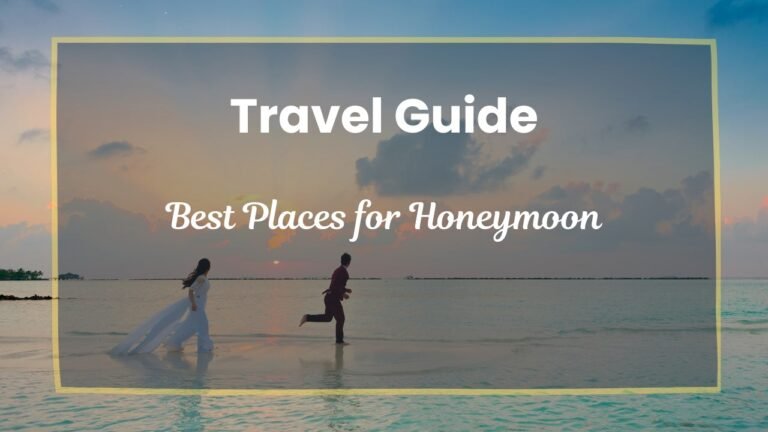Top Gap Year Travel Ideas for Adventure and Planning Tips

Gap year travel ideas can open the door to life-changing experiences, personal growth, and unforgettable memories. Traveling during a gap can give you a global perspective, help you develop new skills, and allow you to explore your passions. This guide will explore the best travel options for young adults and students on gap years.
Why Should You Consider a Gap Year?
A gap year is more than a break from school or job–it’s an adventure that combines personal growth with global exploration. By stepping out of your normal environment to explore the world, you can experience growth that neither a classroom nor a job could offer.
Why thousands of young adults travel during their gap years:
- Personal growth through real-world experience
Each new experience, whether you’re building schools in Peru or exploring a bustling Bangkok night market, helps to shape your identity. - Gaining confidence and independence
Traveling during a gap year teaches you to be independent and make decisions. - Adaptability to unfamiliar environments
Unexpected situations, such as language barriers and culture shock, can teach us resilience and flexibility. - Building a stronger resume with global skills
Volunteer placements, internships, or language programs abroad demonstrate initiative, cross-cultural competence, and commitment- qualities employers love. - Burnout can be avoided before starting college or working life
After years of structured education, a gap year focused on travel offers the freedom to explore and recharge your mind before the next chapter.
A well-planned gap can bring lifelong benefits, including the development of new passions and a global perspective.
Volunteering Abroad

One of the best ways to fill your gap year is by volunteering abroad. You can help communities while also gaining new travel experiences.
These programs include cultural excursions, language classes, and homestays. They are a complete and well-rounded adventure.
Popular Volunteering Programs:
- Conservation projects in Costa Rica and Kenya
While exploring the lush jungles or coastlines, support wildlife sanctuaries and reforestation programs. - Wildlife Rehabilitation in South Africa
Wildlife rescue centers are a great place to get up close and personal with animals in need, such as lions or elephants. - Education and community building in Nepal or Cambodia
Discover local Buddhist traditions while you teach English, help with early childhood programs, or rebuild schools. - Marine conservation in Fiji and the Great Barrier Reef
Join scuba dive expeditions to monitor coral health, remove invasive plants, and support sustainable maritime tourism.
Often, these programs are coordinated by organizations such as GVI, Projects Abroad, or International Volunteer HQ (IVHQ). You’ll also receive training, make international friends, and explore nearby destinations on guided weekend tours.
Adventure Travel and Backpacking

A backpacking gap year could be just what you need if your heart is craving freedom and adrenaline. Budget-friendly and spontaneous, it’s a great way to explore multiple cultures, cuisines and countries at your own pace.
The best way to travel is to share meals, stay in hostels or on overland buses, and connect with other travelers.
Must-Try Adventures:
- Patagonia trek in South America
Explore fjords and take photos of the highest peaks and glaciers in Chile and Argentina. - New Zealand road trip or Lord of the Rings tour
Rent a campervan to explore the hot springs and glowworm caves that have been made famous in films. - Southeast Asia circuit – Thailand, Laos, Vietnam, Cambodia
It is a popular destination for solo travelers because of its culture and affordability. Activities include jungle trekking, cooking lessons, and full-moon parties.
- Experiencing a Kenya Safari
Embark on guided wildlife safaris in the Masai Mara or Lake Nakuru, witnessing lions, zebras, elephants, and more in their natural habitat.
- Surfing in Bali or Costa Rica
Surf towns such as Uluwatu and Santa Teresa are surrounded by yoga studios. They also have smoothie bowls on the beach and bonfires at sunset. - Interrailing through Europe – France, Italy, Croatia, Austria
Trains are a great way to visit castles, art galleries, wine regions and cathedrals.
Beyond the thrill, this kind of travel teaches budgeting, planning, and self-reliance–skills you’ll carry with you for life.
Outdoor Expeditions and Conservation Treks

Outdoor enthusiasts will enjoy a gap year that focuses on nature. It is a great way to expand their environmental knowledge and develop ties with the Earth.
The treks and excursions usually include local partners, guides, and gear. They are both safe and adventurous.
Examples of Popular Expeditions:
- Hiking the Annapurna Circuit in Nepal
Explore remote Himalayan villages and high-altitude passes, with views of the tallest mountains in the world. - Wild camping and survival programmes in the UK or Scandinavia
Explore the Scottish Highlands and Norway’s Fjords to learn about navigation, fire starting, and shelter building. - Marine biology expeditions in Indonesia
Join coral reef research teams to collect data on marine species, underwater ecosystems, and more in Raja Ampat and the Gili Islands. - Rainforest conservation in the Amazon
Support sustainable ecotourism, conduct plant surveys, and monitor wildlife in some of Earth’s biodiverse areas.
These programs are educational, ethical, and memorable because they include trekking permits and eco-lodges.
Tips for Planning a Gap Year

Planning your gap year takes time, but it can be a fun and easy process with the right research and setting of goals.
Key Planning Tips:
- Establish clear goals. You should decide whether you are traveling for pleasure, to gain experience in your career, for self-development, or a combination of all three. The purpose of your trip will determine the choices you make.
- Budget your trip realistically. Include transportation (flights or trains), accommodation, insurance and daily expenses. Budgeting apps such as Trail Wallet and TravelSpend can help you stay on track.
- Research visa requirements. Some countries require proof of funds, a volunteer permit, or a working holiday visa. Applications can take several weeks or even months.
- Use reputable platforms. Search for reputable providers with reviews, clear program descriptions, and safety protocols. GoAbroad, Workaway, and Worldpackers are trusted sites.
- Insurance and safety should be your top priorities. Invest in comprehensive travel coverage that includes medical, theft, and cancellation coverage. Register with your local embassy when traveling for a long time.
- Document your journey. A blog, YouTube vlog, or travel journal can be used to reflect and even as a source for income.
Final Thoughts
The best gap year travel ideas align with your values, interests, and long-term objectives. A well-planned gap year can transform your life, whether you’re looking to explore the world or make a positive impact.
Travel with purpose. Learn more than you can in the classroom. Don’t be scared to leave your comfort zone. Some of the greatest life lessons can be learned on the road.
FAQs
Where is the best place to take a gap year?
Southeast Asia, Africa and Central America should be your first choices. They’re cheaper than Europe and the US and offer a wide range of cultures and experiences.
Is it worth taking a gap year to travel?
Yes, if you want to gain life experience, develop confidence, explore your career options, or take a break. After a gap year, many report feeling more mature and focused.
How do I afford a gap year?
Consider part-time remote work, working holidays, budgeting applications, scholarships for studying abroad or volunteering, or even part-time remote jobs. Many programs offer financial assistance.
How long is a gap year?
Gap years don’t need to last a whole year. Some gap years last from 3-6 months, while others can be as long as 12 months. Your schedule, budget, and goals will determine how long you want to spend.







